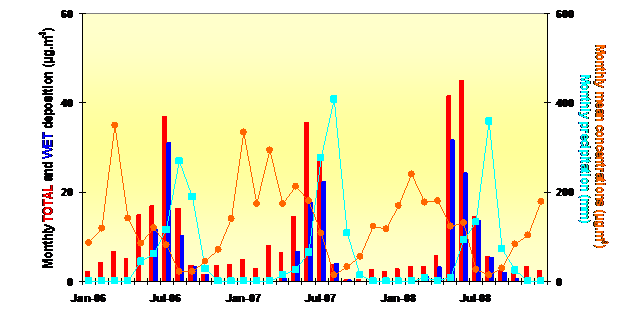Sahelian Dust Transect
The Sahelian transect, fully operational since January 2006, is a set of three stations monitoring the atmospheric dust content and associated deposits. The main objectives are to better constrain the mass balance of desert aerosols at the regional level and assess the influence of variability of the African monsoon and anthropogenic activities on dust content in the Sahel. This is done by evaluating the daily to multi-annual variability of of the dust mass concentration, the aerosol optical thickness, the fluxes of wet and total deposit and the basic meteorological parameters [Marticorena et al., 2010].
This transect consists of 3 ground-based stations (Banizoumbou (Niger), Cinzana (Mali) and M´Bour (Senegal)) situated on an East-West trajectory between 14.4°W and 2.7 ° E and between 13.3° to 14.4 °N, i.e. on the path of the Saharan and Sahel dust plumes during their transport toward the Atlantic. The stations are equipped to operate in harsh environmental conditions (heat, dust etc.) and with a maximum of autonomy (power supply by solar panels). This device is part of the observation task of the Observatory of Sciences of the Universe (OSU) EFLUVE.
 |
Monthly fluxes of total and wet deposit, monthly average dust mass concentration and monthly precipitations measured from 2006 to 2008 in Cinzana (Mali). Total deposit is greater at the beginning of the rainy season. It is mainly due to a very high wet deposition resulting from the combination of atmospheric concentrations of dust still very strong, when the first rains occur (Marticorena et al., 2010)

